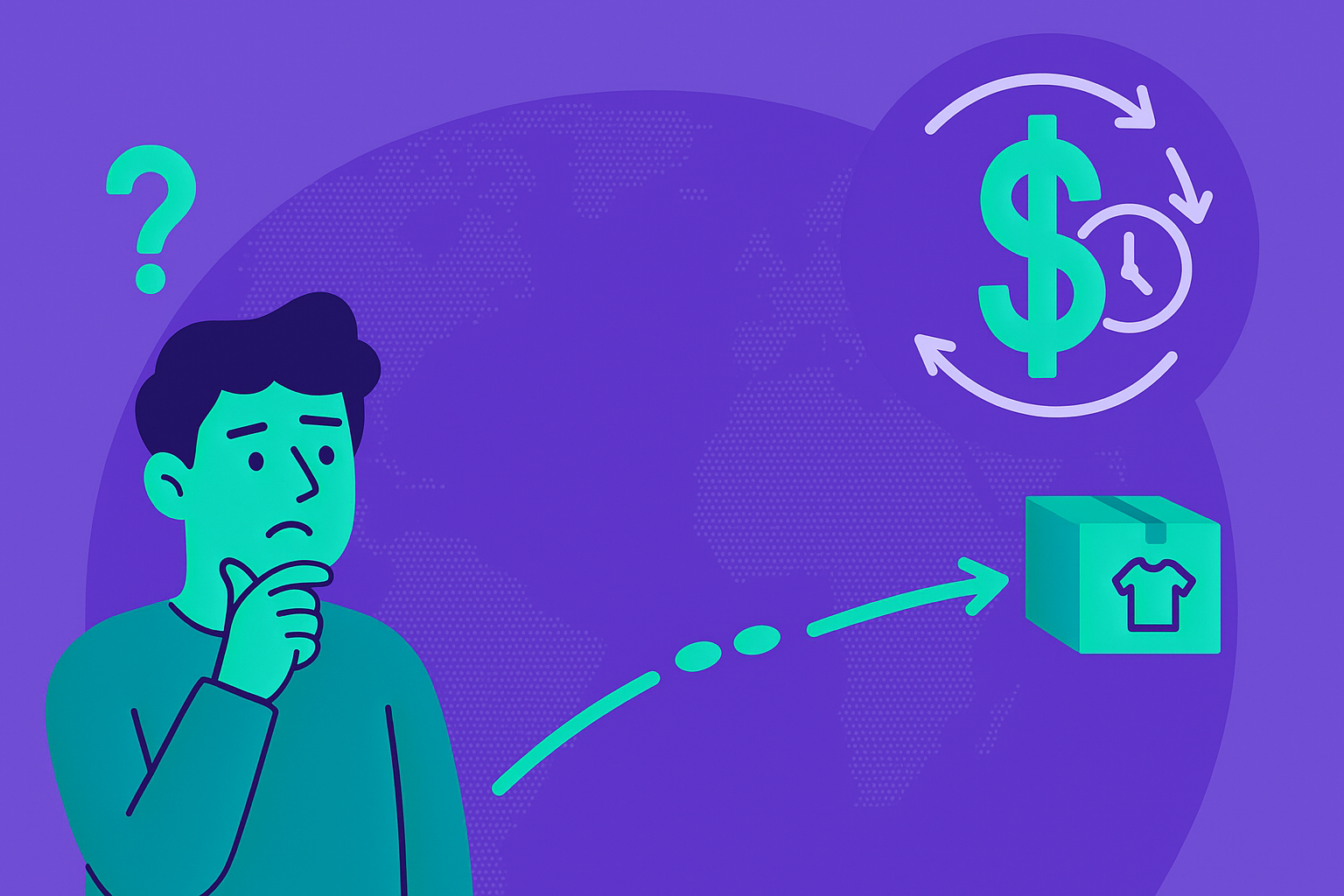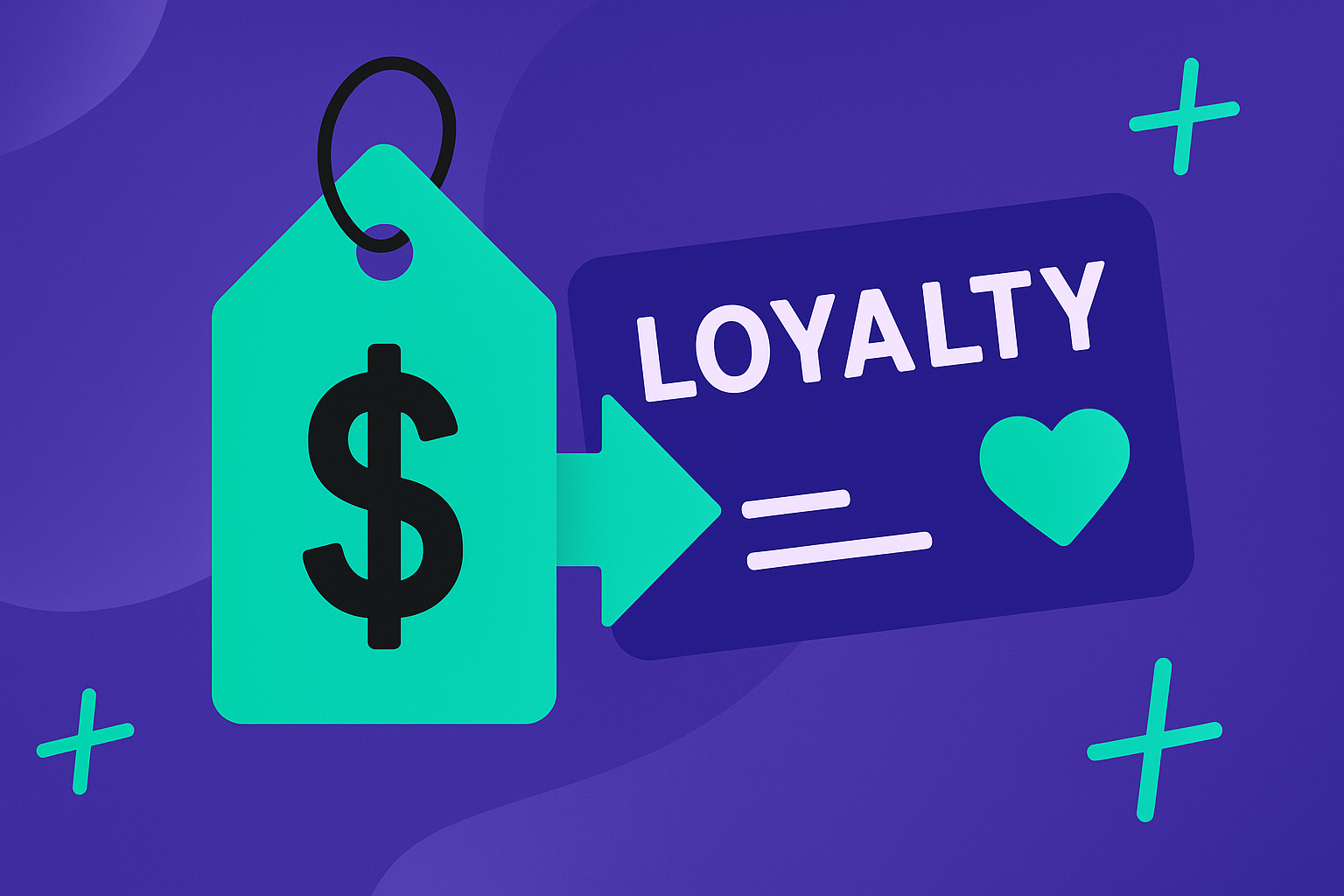Nobody likes returns! Customers are annoyed by the many process steps involved, from getting a shipping label to driving to the post office. For brands, returns don’t just mean lost revenue but also more costs. Paying for return shipping, re-stocking, lost inventory and customer service costs all add up. In the end, it means that you need three sales to make up for the losses from just one return!
Returns – the elephant in retail
As much as everyone hates returns, they’re not going anywhere. Returns are a massive issue costing the retail industry $550 billion in 2020. And the problem is only getting worse. Retail returns have grown 75% in the four years leading to 2020 and are projected to grow further with the rise of eCommerce. As this high-cost phenomenon continues to swell, your bottom line will be dealt a heavy blow. How heavy? Given current return costs and increased return prevalence, we project that the average brand will suffer an 8% margin reduction by 2025. Considering the already tight margins in retail, this is a significant blow!
There are three key retail trends that are driving this 8% projected margin reduction:

1. eCommerce returns are naturally high
Earlier we mentioned that returns have grown rapidly over the last few years. Return growth over the past years is mainly the result of the higher prevalence of eCommerce returns. Return rates for online orders are 2-3x higher than in-store returns.
eCommerce’s higher return prevalence can be explained by online shopping behaviour. Online, 32% of shoppers purchase items with an intention to return them. This may seem counterintuitive - who would buy something just to return it? Online shoppers are unable to try on the item and be assured of the colour, fit, and feel so these customers accept that they will likely return the items. Inability to try on items also leads to bracketing. Bracketing occurs when a customer orders the same item in different colours, sizes, or styles with the goal to keep only the few they liked most and return the remaining items. This leads to return rates within the high double-digits for some orders when customers purchase many variations and only elect to keep one.
2. Blistering-fast eCommerce Growth
Much higher online return rates were not a huge problem when eCommerce made up a small portion of retail sales. However we know eCommerce revenue is not simply growing, but exploding, especially during the peak of the COVID crisis. eCommerce growth will continue post-COVID, as the channel is projected to grow 13 times faster than in-store revenue over the next five years. With eCommerce capturing an ever-growing share of total revenues, the eCommerce return problem will become gigantic. Soon it will be insurmountable for brands who do not take action now!
Currently eCommerce in Canada accounts for an average of 13.4% of sales and is projected to be 17.2% by 2025. Compare that to China at 24.9% in 2020!
3. High return price and foregone revenue
While the first two trends explain the growth of returns overall, the death-blow to your margin stems from how expensive returns are in the first place. How expensive? CBRE found that companies spend 60% of the original sales price on returns. The high price tag is due to the increased complexities in how returns are being managed today. They straddle many cost centres of a brand, requiring input from many employees. Additionally, to calculate the true cost of returns, you have to go beyond looking at the obvious expenses like shipping and labour. Returns have hidden costs that can be even more expensive as they impact a brand’s sales revenues. The main factors contributing to the price of returns are:
1. High logistical cost – including 3PL fees
2. Refurbishment and restocking burden
3. Customer service efforts and time
4. Slow turnaround to the forward supply (3-4 week cycle to resell)
5. Lost revenue – unable to manage exchanges and missed sales opportunities

The first and simplest reason for the high cost of returns is the actual logistical cost of processing returns. Shipping and handling costs make up half the loss in margin. Unlike in-store sales, that are mainly returned in-store, the majority of online returns are mailed into national distribution centers. Returns shipping costs are high because every item is typically shipped into a single national ‘returns processing location’. Today’s retail supply chains are simply ill-designed for ecommerce reverse logistics. They are designed to batch-ship large amounts of inventory to a network of retail stores, primarily located in urban and large suburban areas. However, return logistics involve individual orders flowing from hundreds of thousands of customers that are dispersed in rural, suburban, and urban areas. The short story is, return logistics are a lot less efficient, translation: a lot more expensive for you.
For brands working with 3PLs, the return costs add-up. Most 3PLs are not return specialists, with a lack of specialized technology needed to operate efficiently. So it is often time-consuming and manual for them to process your returns which makes it expensive for you. Brands find themselves paying for more than just stocking and storage fees that come with forward logistics. They also incur costs for refurbishment, processing the refund and disposing of defective merchandise.
The logistical costs are heightened because customers must mail-in to the warehouse, and most retailers only operate with two or less across Canada. Naturally, warehouses far from large customer populations incur increased shipping costs. In a country as vast as Canada, the cost equates to $16 per return which puts downward pressure on margin. Beyond just the logistical costs, a slim network of warehouses slows the re-fulfillment process so brands cannot resell inventory quickly. This is especially concerning for brands with highly seasonal merchandise since long lead times result in discounting or disposal of off-season merchandise.
While mail-in returns are expensive, in-store returns are not cheap either. As the role of the retail store evolves, turning stores into hubs for buy-online return in-store (BORIS), returns start to accumulate. Consequently, ⅓ of retail space gets consumed with eCommerce fulfilment. With eCommerce returns eating into retail space, companies have two options. They can pursue larger spaces which equates to higher lease payments. But the other option is equally unappealing: they could sacrifice space for displaying inventory to fulfill eCommerce returns, which reduces revenue. In-store returns do not just take up valuable retail space, they also lead to lost revenue. For many omni-channel brands, much of their online merchandise is not carried in-store or each store has different curations. This leads to challenges when customers return merchandise not carried in-store. Since store associates cannot display merchandise in high traffic areas, they often relegate these items to the clearance rack where they are heavily discounted. However, where space is especially tight, brands dispose of items or leave them in the backroom. Both discounting and disposing merchandise not carried have negative effects on revenue.
Further, returns require significant support. Online returns involve multiple complex steps with many return policies requiring customers to email or call customer support. If issues arise during the process, it can lead to a time-consuming back-and-forth between customers and customer support. Some brands have told us that 30% of customer service time is spent dealing with returns. As returns grow, even more time will be needed to be spent on customer support. in-store returns require support as well. They require in-store associates to process the return (including refund) and restock items, which diverts their time from assisting customers in making purchases or simply enhancing the brand experience.
Some companies attempt to negate the above three cost drivers by making customers pay for returns, not allowing in-store returns, or not hiring enough customer service representatives. While these actions may reduce costs, they hinder the customer experience. Today’s consumer is concerned with the end-to-end shopping experience, including post purchase support for returns/exchanges. Customers desire a smooth return experience - so much so that roughly 80% of them will stop shopping with a brand after a bad return experience. If you are reading this article because you want to avoid an 8% reduction in margin, then you certainly don’t want to incur 10x that and lose 80% of your customer repeat business.
How to combat the elephant and preserve margin?
The good news is that not all hope is lost. Returns don’t have to be terrible for the customer or for you. Here are some concrete steps you can take to reduce returns and protect your margin.
The first step is the most straightforward - try to reduce returns! We have a whole article dedicated to how you can reduce your return rate. Tactics include higher quality photos, more detailed product descriptions, and product reviews.
Tried all those and still have customers requesting returns? - try encouraging exchanges! When customers initiate a return, first prompt them with other colours / sizes of the same SKUs or similar SKUs that they can exchange their purchase with. Doing this before processing customer returns will help you retain some revenue.
Even if you adopt both of the above tactics, it would still be helpful to cut return costs. How? Many return management solutions exist to do just that. Most have return portals with great UIs that guide customers through the return process, saving customer service time, and some also have the ability to encourage exchanges as suggested above.
Finally, you can deal with the elephant in retail by enlisting the support of the bear!
At ReturnBear, we not only provide the UI-driven return and exchange solutions above, but we’re also experts in reverse logistics (yep, we actually handle product and ship boxes). We’re designing the technology, creating the purpose-built physical networks and deploying decentralized operational processes to lower your costs and improve your customer experience at the same time!
Sounds almost too good to be true? Returns is an entirely new operating category and at ReturnBear we are solely focused on solving this complex retail opportunity.

Ready to get in touch?
Contact us today to find out how we can help you capture all the benefits of eCommerce growth without the hit to your margin and turn regrets into brand opportunities!













.jpg)






%20(1).jpg)







































